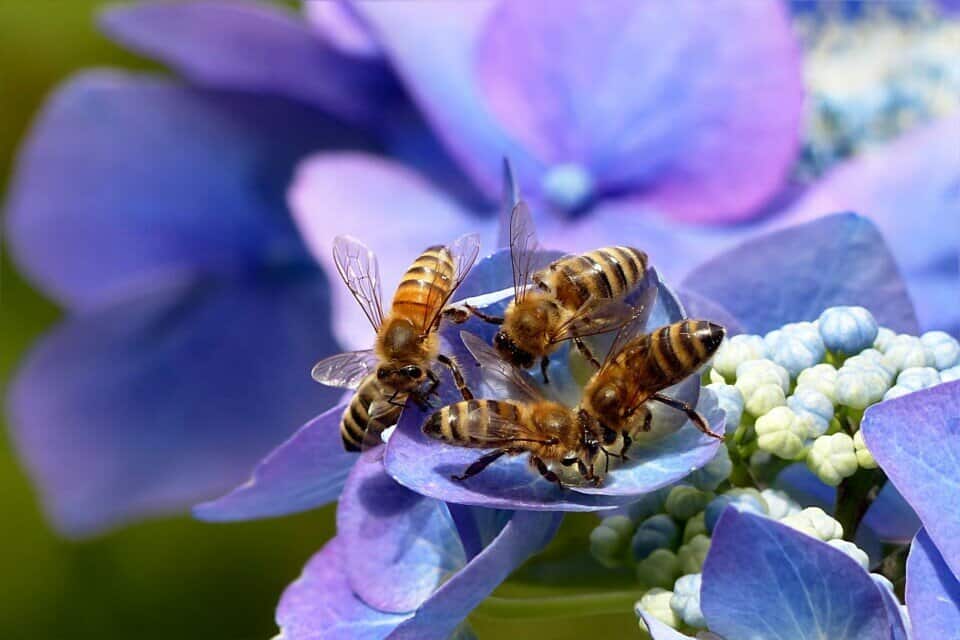Some links in the post are affiliate links and I get a commission from purchases made through some links found in the post.
Hydrangeas are a genus of over 75 species. These are erect or climbing woody shrubs, in the family Hydrangeas which are found in many areas including the Western Hemisphere and eastern Asian countries like Japan, Indonesia, Himalayan mountains, and the Americas. Another common name for hydrangea is Hortensia.
Several of its species are grown in greenhouses and gardens for their extravagant, cluster-like shape.
The hydrangeas can grow as climbing vines and trees, but you will most commonly find them growing as shrubs. The flowers that grow on these plants make them look attractive and beautiful.
These flowers have a variety of bright colours, shapes, and sizes. Their colours include pink, blue, red, white, purple, and green. You will see the hydrangea flowering from early spring to fall.
Most plants that attract bees either have a strong smell/scent or they are brightly coloured or both.
In the case of the hydrangea, it does have a large and colourful bloom which may attract bees and other pollinators towards it.
We should keep in mind that not all hydrangeas will attract bees towards them.
There are certain varieties like Hydrangea anomala that will attract bees whereas a few hydrangea varieties like Hydrangea macrophylla hortensia or French hydrangea do not attract bees.
Does a Hydrangea Attract Bees?
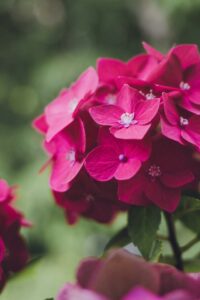 Due to their large, brightly coloured flowers, it is assumed that all hydrangeas will attract bees. To the contrary, this is not the case.
Due to their large, brightly coloured flowers, it is assumed that all hydrangeas will attract bees. To the contrary, this is not the case.
Only some hydrangeas attract bees towards them whereas others do not. The nectar and pollen in a flower are what mainly attracts bees towards them.
Most of the time the large flowers of the hydrangea are sterile. Sterile flowers do not contain nectar and pollen and so the chances of them attracting bees are very low.
Mostly, the clusters towards the inner part of the hydrangea are the ones that contain fertile flowers which have nectars and pollen whereas towards the outer part of the hydrangea have clusters with sterile flowers.
Bees are attracted to only those plants or flowers which can provide them with food/nutrition. Fertile flowers can be seen as a source of food for bees while sterile flowers are not a food source for them.
What Varieties of Hydrangea Attract Bees?
As we have established by now, only some types of the hydrangea attract bees. These include Hydrangea paniculate, Lace cap Hydrangeas, Smooth Hydrangeas, Oakleaf Hydrangeas and Climber hydrangea.
The hydrangea paniculata has a lot of cultivars but not all of them are liked by bees. So, if you are looking to attract bees to your hydrangea plant then you will need to look for those cultivars that have a lot of fertile flowers on the blooms.
Hydrangea Paniculata
One such variety of the hydrangea paniculata is known as “Confetti”. This variety specially attracts bumblebees towards it. It is a beautiful shrub with loose flower heads.
The overall appearance of the confetti is rather informal when compared to some of the very compact and ornate hydrangeas that grow flower heads in neat round ball-shaped bunches.
Lace Cap Hydrangea
Another type of the hydrangea which attracts bees is the lace cap hydrangea. These have elegant and delicate-looking flat flowerheads which are gently fertile and arrive in pink and blue as well as white waves.
The colour of the flower changes depending on the pH level of the soil it is growing in. The flat flower heads are surrounded by large, ornamental flowers which are sterile.
The bees will mainly be attracted to the flat flower heads in this variety of the hydrangea.
Smooth Hydrangea
Smooth hydrangea is a native hydrangea. It has white flowers which can feed bees and pollinators. This variety of the hydrangea blooms from early to late summer and can grow up to 3 to 5 feet tall.
They are sometimes referred to as the wild variety and are easy to propagate.
Oakleaf Hydrangea
Oakleaf hydrangea has leaves that resemble those of an oak tree.
These are also known as hydrangea Quercifolia and can be a great source of pollen and nectar for bees and other pollinators. Among this variety, the Gatsby Pink hydrangea are the ones that attract bees the most.
The reason being that they have lace-cap flowers which release a pleasant scent, and the colour of the plants becomes deep red as it ages.
It also continues to bloom in the fall, making it even more attractive for bees, as fall is the season when most plants shed their leaves and flowers.
Hydrangea Anomala
Now coming to the climber hydrangea also known as Hydrangea anomala, tends to grow rapidly. These can grow vertically by using other climber plants and shrubs and can grow to a height of 30-40 feet.
Due to these reasons, they can take up plenty of space. They also have aerial roots that can stick to a surface like cement.
They will be a good choice for an outdoor plant rather than an indoor one.
These have dark green leaves with white flowers which can grow up to 8-10 inches wide and have both pollen and nectar, which serve as an attraction for bees. This variety usually blooms between June and July.
Does a Hydrangea Attract Wasps?
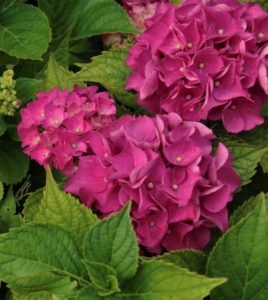 It is possible for some varieties of the hydrangea to attract wasps. The main variety that attracts wasps are the Panicle hydrangea. These are further categorised into Limelight, Quickfire, Pinkie Winky, and Fire Light.
It is possible for some varieties of the hydrangea to attract wasps. The main variety that attracts wasps are the Panicle hydrangea. These are further categorised into Limelight, Quickfire, Pinkie Winky, and Fire Light.
The Quick-Fire Panicle hydrangea is the one that attracts wasps the most amongst the categories of the panicle hydrangea. They bloom a month before the other varieties of the panicle hydrangea.
When the flowers of the quick fire first bloom, they are pure white in colour, then they turn pink and become extremely dark rosy, pink in the fall.
They also have a fragrance as well as pollen and nectars which attract wasps and other pollinators.
Does a Hydrangea Attract Butterflies?
Butterflies are attracted to the hydrangeas due to their large colourful blooms and especially love the lace caps variety of hydrangea. The hydrangeas can also act as an excellent source of food for the butterflies.
The lace cap hydrangea attracts butterflies the most because they have a lot of fertile flowers which contain pollen and nectar. The cluster located in the centre of the plant serves as a very good food source for butterflies.
Butterflies like to feed on a variety of hydrangea that is known as kalanchoe. Flowers of this variety of the hydrangea bloom for several weeks at once. They will bloom either at the end of winter or at the start of fall.
Another plant that attracts butterflies is the Hydrangea paniculata grandiflora. This is also known as the Pee Gee Hydrangea.
Even though this is not one of those plants that produce nectars, it has been discovered that when it starts to bloom, it does attract plenty of pollinators towards it.
Amongst these are a kind of butterfly called the Spring and Summer Azure butterfly which lay eggs on this of the hydrangea when it blooms.
Does a Hydrangea Attract Ants?
Hydrangeas do not generally attract ants. So, if you see that your plant has ants on it then chances are that your hydrangea has an aphid infestation.
Aphids leave behind them a sticky substance like honeydew. This is mainly what attracts ants towards the hydrangea.
Ants themselves do not feed on hydrangea. It is the sticky honeydew which is produced by aphids during their infestation that ants feed on and so end up coming onto the flowers of your plant.
The aphid infestation can be harmful for your plant. Such infestations tend to occur during the maturing age of hydrangeas and disappear once the plant has matured.
If you want to get rid of the ants from your hydrangea, then first work on getting rid of the aphids that infest your plant.
You can either disinfect your hydrangea yourself by using a mixture of borax and sugar and placing it at the base of your plant.
This will help to prevent the aphids from coming to your plant and subsequently stop any ants from coming to your plant as well.
Another way to get rid of aphids is to spray your hydrangea with a water hose.
The aphids on your plant will probably not die by doing this but the strong pressure of the water coming from the hose will surely remove the aphids off your hydrangea.
If nothing else works, then may be trying using an insecticide to kill the aphids and consequently the ants that come on your plant as a result of the aphid infestation.
Does a Hydrangea Attract Bugs?
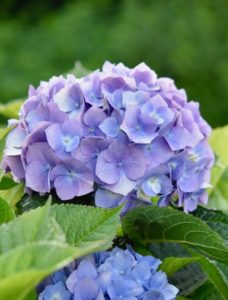
Hydrangeas do not attract bugs more than any other plant. You will see just as many bugs on your hydrangea as any other plant around it.
Although, you may sometimes notice a strangely large number of bugs on your plant. There can be many reasons why this happens.
During the blooming season of the hydrangeas, they produce flowers that outspread strong fragrances around them.
This does tend to attract small flies and bugs towards the plant and may increase the number of bugs present on your plant.
Now coming to some of the commonly seen bugs that are attracted to the hydrangea include Japanese beetles, spider mites, aphids, and scale.
Japanese Beetles
Japanese beetles are about a third to half an inch long. Their head is metallic green in colour accompanied with brown wing covers.
They cause damage to the hydrangea by usually feeding on its leaves. The main effect this has on the Hydrangeas is that they will end up looking less aesthetically pleasing.
You can conveniently treat these by either using an insecticide or neem oil or just by hand-picking the beetles off plants and throwing them into a bucket of soap.
Spider Mites
Spider mites are almost invisible to the naked eye. So, chances are that you will not actually be able to see these until you start noticing their effects on your plant.
They live under the leaves of hydrangeas and enter the plant’s cell for food. Their presence on your plants can be noticed in the form of a pattern of dots that these bugs tend to leave on hydrangea leaves.
You may also see the leaves of your plant turning yellow and if the infestation is severe then your leaves may turn bronze in colour. This can be treated by well-watering your plant.
Aphids
Aphids are very small, green coloured bugs that are usually found on the stem and sap of newly grown hydrangeas as it is relatively easier to pierce through them.
They tend to sip sap from these parts of Hydrangea, which can result in fungal issues. Their infestation results in a sticky honeydew being left behind on your plant which becomes an attraction for ants.
You can treat the aphids by watering your plant with a hose or you can place a mixture of sugar and borax at the base of the hydrangea. An insecticide can also be used to fix the problem.
Scales
Scales resemble tiny shells more than they look like bugs. There is not a specific part of the plant where you will find these.
You can remove scales from whichever part you see them infesting on your hydrangea by pruning those areas of your plant.
If there are only a few insects, you can simply pick them off by hand or apply neem oil or a cotton swab soaked in alcohol to individual insects. If the infestation seems severe to you then you may use an insecticide to resolve the issue.
Final Thoughts
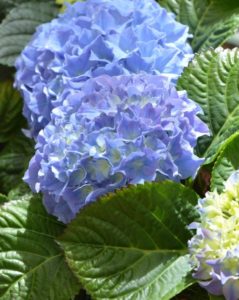 Hydrangea has many different species. It is a genus of the Hydrangeas family and is found in many countries including Japan and the Americas. Certain varieties of the plant grow as shrubs whereas others grow as climbers.
Hydrangea has many different species. It is a genus of the Hydrangeas family and is found in many countries including Japan and the Americas. Certain varieties of the plant grow as shrubs whereas others grow as climbers.
The hydrangeas are very well known for their large and brightly colourful flowers which are sometimes fragrant as well. Due to these features of the flowers of the hydrangea, they attract bees, wasps, butterflies, ants, and bugs.
Bees are attracted by the nectar and pollen produced by the fertile flowers of the hydrangea. They feed on the nectar and pollen and will mostly visit only these flowers and not the sterile ones.
Wasps are also attracted to the hydrangea for the same reasons as bees. They tend to feed on the nectar and pollen in the fertile flowers of the hydrangea. They are mainly attracted to the quick-fire panicle hydrangea.
Butterflies are attracted to two main types of the hydrangea. These include lace cap hydrangea and kalanchoe hydrangea. It is also found that Azure butterflies lay eggs on the panicle variety of the hydrangea.
Ants get attracted to the hydrangea if there was an aphid infestation on your plant. The aphids leave a sticky honeydew on the plant when they leave and consequently ants come to feed off this honeydew as they see it as a source of food.
Many different types of bugs are seen on the hydrangea. These include the Japanese beetles, spider mites, aphids, and scales.
All these bugs are found on different parts of the hydrangea. A common way to get rid of these would be to use neem oil or an insecticide.
Sometimes, simply hand-picking them or watering your hydrangea properly will help you get rid of these bugs.

